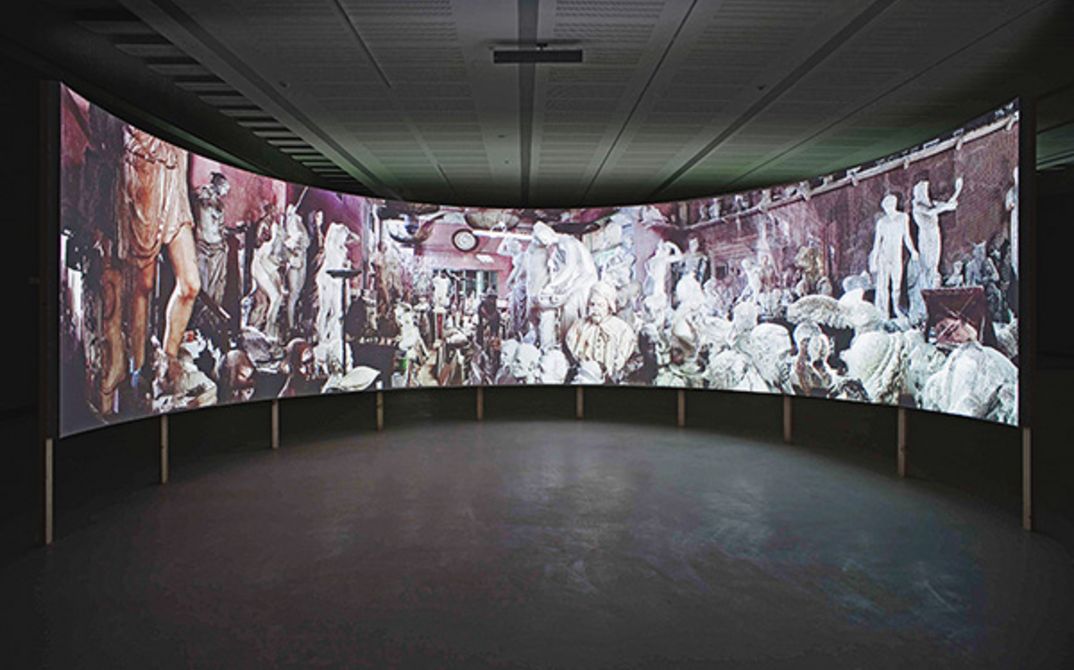The main character of Afterimage is the camera, navigating space as though searching for something, a ghost looking for its own body, walking through an abandoned store of sculptures. The location is the workshop of Cinears, the oldest company at Cinecittà Studios, which has been producing sculptures and props since the beginning of the Italian film industry. It is now run by the fourth generation of the De Angelis family. Hundreds of sculptures, in the form of resin and plaster moulds, are gathered in the workshop, with figures representing gods as well as other religious, mythical and historical characters that have been used in films, some of which are copies of famous artworks. For Afterimage, the original space was scanned by laser technology and transformed into a point cloud – a system of pixel coordinates that exist in a virtual space – and then an animated film was made from this during post-production. The film installation translates into space the field of vision of the human eye, thus creating an immersive experience. Reflecting the crisis affecting the cinema industry, the Cinears workshop was temporarily closed in spring 2013.
Clemens von Wedemeyer, born in 1974 in Göttingen, lives and works in Berlin.
Semicircular video installation, colour, sound, 6 minutes; sculptures: Cinears, Rome; digital 3D scan: Trigonart, Berlin; digital transfer: Thomas Bauer; 3D animation and rendering: Celluloid Visual Effects, Berlin; VFX supervisor: Holger Hummel; CG artist: Dennis Mielke; sound design: Neuton BLN, Thomas Wallmann; Foley artist: Peter Roigk; installation development: Eidotech, Berlin; commissioned and produced by MAXXI, Museo nazionale delle arti del XXI secolo, 2013; courtesy Galerie Jocelyn Wolff, Paris/KOW Berlin.
